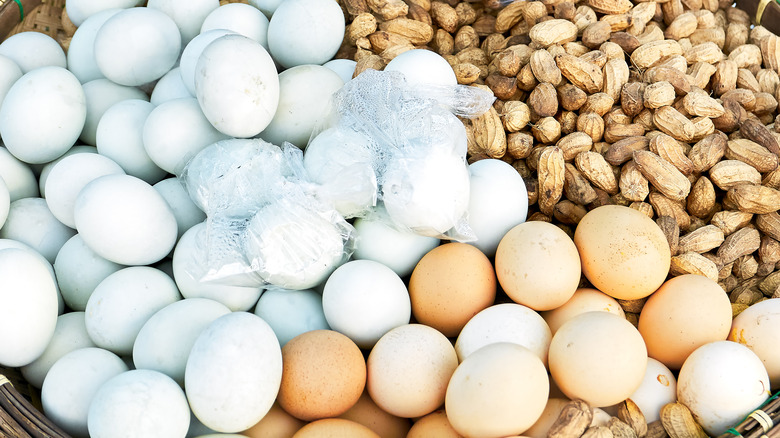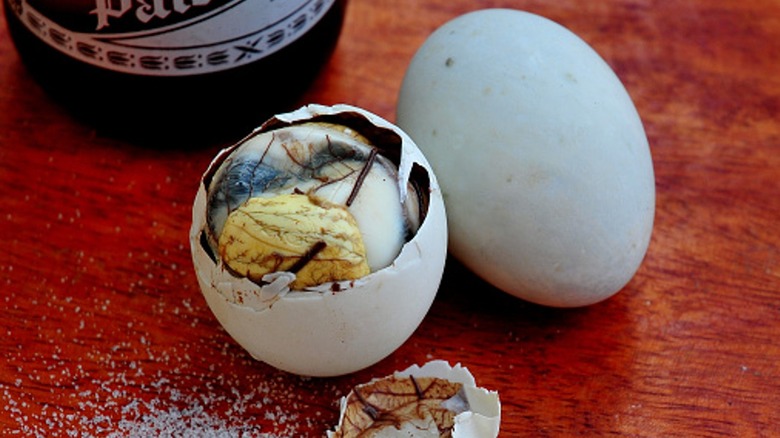Balut Vs Penoy: The Difference Between These Filipino Street Foods
Filipino street food, a melting pot of flavors and textures, provides an exciting culinary journey for those willing to explore its diverse offerings. Balut and penoy, two standout delicacies, emerge as quintessential offerings. In the heart of Filipino street food culture, these duck egg delicacies stand as culinary ambassadors, each with its own tale, flavor, and experience.
Beyond mere snacks, the experience of consuming balut and penoy is a deep dive into Filipino heritage and culinary tradition. While originating from the same source and found on similar street corners, their unique traits set them apart, offering a culinary paradox worth exploring. Balut is a fertilized duck egg with a partially developed embryo, while penoy is a fertilized egg where no embryo develops. These iconic street foods encapsulate the essence of Filipino cuisine, offering unique snack choices for those eager to explore the rich tapestry of flavors found in Southeast Asia.
The embryo in balut is a delicacy
Balut is a boiled, fertilized duck egg with an embryo two to three weeks into development. There are different ways to experience this street food, which is best served warm. Some people start by delicately breaking the shell and making a small hole, revealing a mixture of broth and embryo waiting to be savored. They then sip the flavorful broth, relishing its rich and savory notes. Others like to dive straight into the tender embryo, appreciating its unique texture and taste. The white part, referred to as bato, is often discarded as it can be rubbery and unpleasant.
Embarking on the culinary journey of balut is not merely about satisfying hunger; it's a sensory experience that engages all facets of the palate. It's also about engaging in a ritual that connects generations, a rite of passage for those seeking the bold flavors of Filipino street cuisine. Each bite offers an interplay of flavors and textures, ranging from savory and slightly gamey to creamy and indulgent. There is also a distinct crunch coming from the bones and beak of the bird, and the longer the egg is left to develop, the crunchier it will become.
Penoy is a more subtle offering
Penoy, on the other hand, has the distinct flavor of the balut yolk while lacking the embryo. The charm lies in its simplicity, offering a smoother and milder experience with a more straightforward flavor profile. Like balut, penoy are fertilized eggs, but around days 11 and 17 of incubation, the egg is examined with a light. The eggs that show no developing embryo are then marked and sold as penoy.
To delve into penoy, crack open the shell to reveal the uniform yellow interior, devoid of the embryo found in balut. Whether enjoyed plain or with a sprinkle of salt, penoy invites diners to appreciate its unadorned elegance, offering an experience that contrasts with the boldness often found in other Filipino street foods.
In terms of taste, penoy offers a nuanced flavor profile. Its mild yet satisfying taste is reminiscent of a traditional hard-boiled egg, with that familiar hint of richness that lingers on the tongue. The smooth and creamy texture adds depth to each bite, creating a sensory experience that transcends its humble origins and elevates it to a sought-after delicacy among locals and visitors alike.


